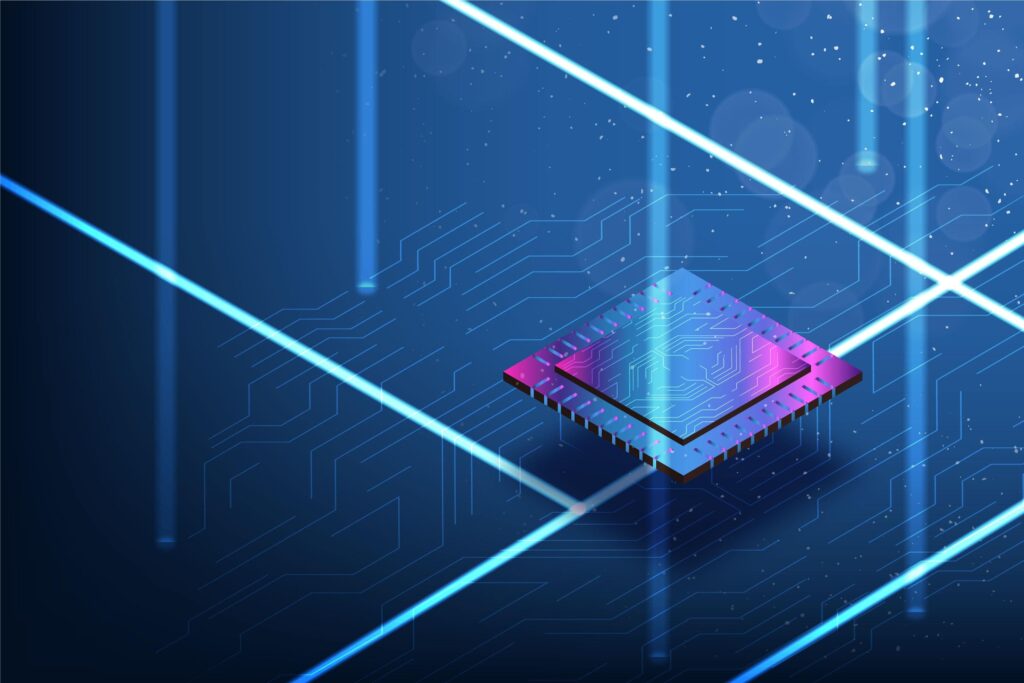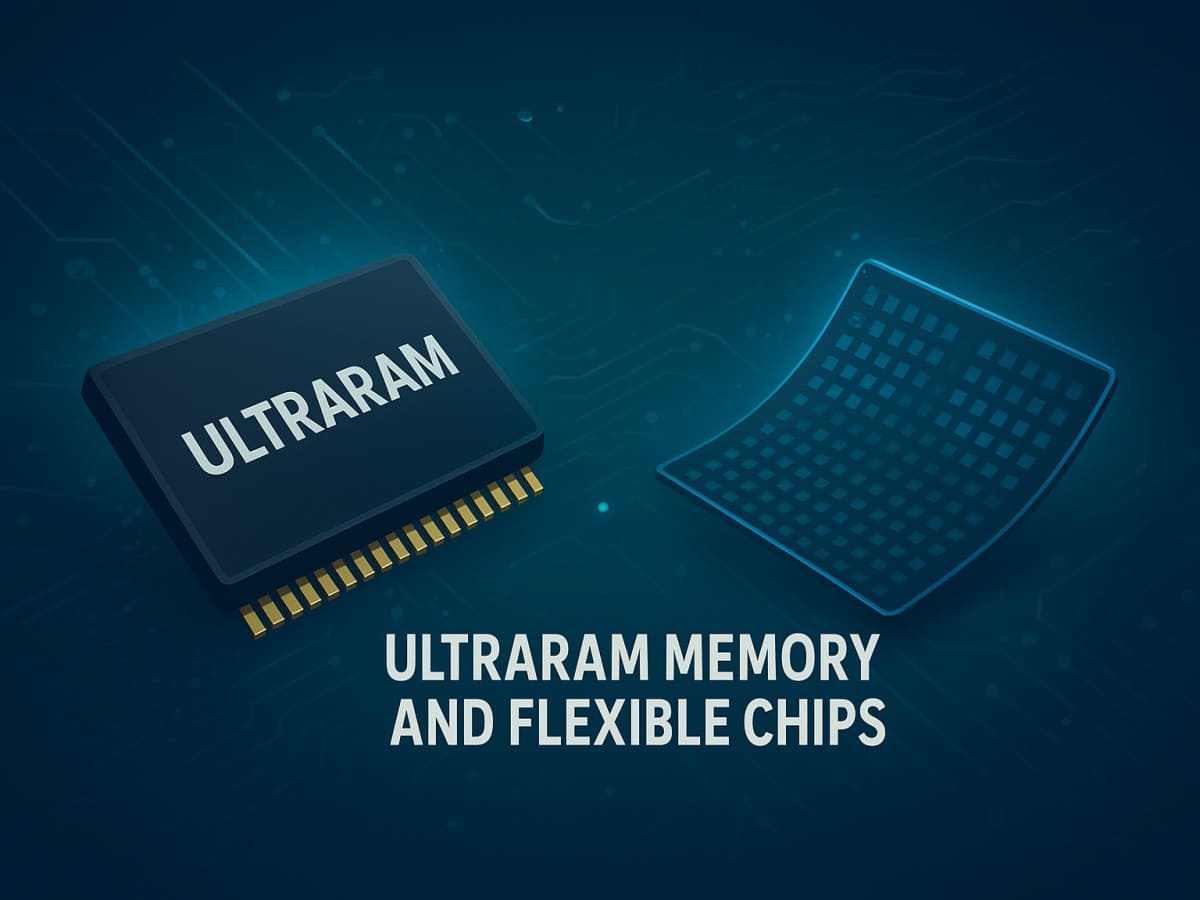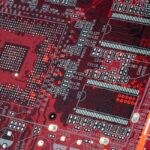Now Reading: How Semiconductor Design Innovations Are Fueling Green Energy Solutions
- 01
How Semiconductor Design Innovations Are Fueling Green Energy Solutions
How Semiconductor Design Innovations Are Fueling Green Energy Solutions
Discover how UltraRAM memory and flexible chips are revolutionizing the semiconductor industry. Explore their features, benefits, applications, and future impact on technology, IoT, and data storage.
Introduction
When we think about green energy, our minds usually jump to solar panels sparkling on rooftops, giant wind turbines along coastlines, or electric cars zipping past gas stations. What often gets overlooked, though, are the tiny heroes inside these systems—the semiconductors.
Chances are, you’re holding a semiconductor-powered device right now (your phone, maybe). But beyond powering gadgets, semiconductors are now shaping the future of clean energy. Without them, the dream of a carbon-neutral world would stay just that—a dream. With them, it’s suddenly possible.
Why Semiconductors Are the Unsung Heroes of Sustainability
Think of semiconductors as the energy translators of our modern world. They quietly manage electricity: turning solar rays into usable household current, regulating how EV batteries charge, and making sure power grids don’t collapse when demand spikes.
For solar farms, they maximize how much sunlight becomes usable power.
For wind turbines, they smooth out inconsistent gusts into stable electricity.
For EVs, they’re the reason you can charge faster and drive farther.
For smart grids, they’re the “nervous system,” making energy smarter instead of just stronger.
Without advanced semiconductors, we’d still be stuck with clunky, inefficient energy systems.
The Big Breakthroughs
1. Wide Bandgap Materials (SiC & GaN)
Traditional silicon has had a great run, but Silicon Carbide (SiC) and Gallium Nitride (GaN) are stealing the spotlight. Why? They waste less energy as heat and work better under high power.
That’s why Tesla has adopted SiC chips in its cars. The result? Longer range, quicker charging, and greater efficiency. Meanwhile, GaN is behind the new generation of compact, lightning-fast chargers and solar inverters.
2. Power Electronics That Don’t Waste Power
Energy conversion used to be a lossy process—lots of energy disappeared as heat. New semiconductor designs slash those losses. A solar farm today delivers significantly more electricity to the grid than one from even five years ago, largely because of better chips.
3. Smart Grids Made Smarter
Modern grids aren’t just about wires and poles anymore—they’re digital ecosystems. With semiconductor-driven sensors and controllers, grids now adapt in real time. If solar production dips on a cloudy afternoon, the grid automatically balances with stored energy or other renewable sources.
4. Smaller, Denser, More Efficient
If old clean energy equipment was bulky and expensive, today’s is sleeker and smarter. Compact chips are behind everything from home battery packs to lightweight EV systems, helping cut costs and improve adoption.
5. When AI Meets Energy
Chips don’t just manage energy—they’re learning to think about it. Pair semiconductors with AI, and you get predictive energy management. Imagine your home adjusting energy use based on weather forecasts, or factories cutting waste automatically. That’s not futuristic—it’s happening now.
Stories From the Real World
Tesla’s Secret Sauce: Beyond cool designs and hype, Tesla’s biggest edge is actually its use of SiC semiconductors. They make the cars more efficient than most competitors.
Solar Farms in India: Thanks to wide bandgap devices, inverters here are operating at record efficiency, making solar cheaper than coal in some regions.
Europe’s Wind Power: With semiconductors stabilizing their outputs, wind farms are delivering reliable power even in inconsistent weather.
Looking Ahead: What’s Next?
The semiconductor journey doesn’t stop here. Researchers are exploring:
Graphene chips that could be lighter, faster, and more efficient.
Quantum semiconductors that might completely redefine energy harvesting.
AI-designed chips that optimize themselves for maximum sustainability.
The future of clean energy might not just depend on how many solar panels we install or how many EVs hit the road—but on how smart and efficient the chips inside them become.
FAQs
1. How do semiconductors support renewable energy?
They improve energy conversion, storage, and management across solar, wind, and EV systems.
2. Why are SiC and GaN so important?
They’re more efficient than silicon, enabling faster charging, better solar inverters, and stronger power systems.
3. How do semiconductors impact EVs?
They improve range, reduce charging times, and make batteries safer and more efficient.
4. Do semiconductors actually reduce waste?
Yes—modern chips cut power losses dramatically, meaning more usable energy.
5. How do smart grids depend on semiconductors?
Chips handle the sensors and controllers that let grids adapt in real time.
6. Are these innovations affordable?
Upfront costs can be high, but long-term efficiency saves money and accelerates adoption.
7. Which industries gain the most?
Automotive, renewable energy, and even consumer electronics are seeing massive benefits.
8. Can this really reduce carbon emissions?
Absolutely—by reducing waste and boosting renewable energy use, semiconductors are critical to net-zero goals.
9. Is semiconductor recycling possible?
Yes, and it’s becoming a bigger focus as sustainability spreads through the industry.
10. What’s the next frontier?
Graphene, quantum materials, and AI-driven chip design will define the next decade.
Conclusion
When people picture clean energy, they often see giant machines—turbines, solar farms, electric cars. But the real revolution is happening on a much smaller scale, in semiconductors no bigger than your fingernail.
They may be invisible to most of us, but they’re enabling the biggest energy transition in history. Smarter, faster, more efficient chips are the quiet force behind the world’s push toward sustainability.


















